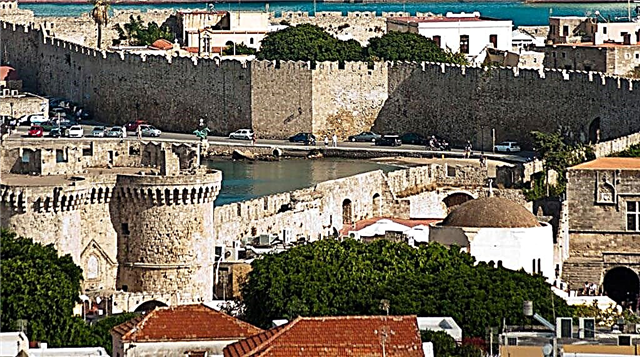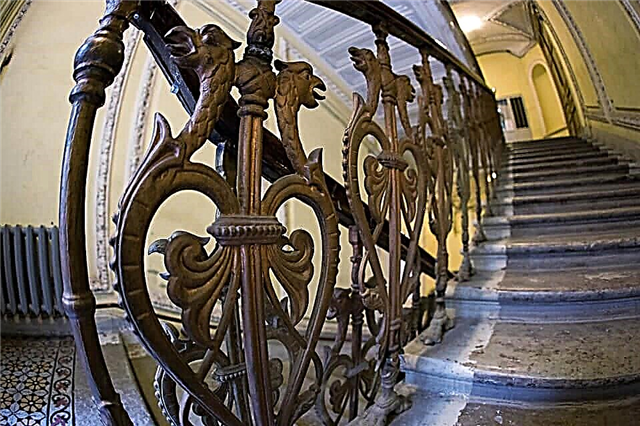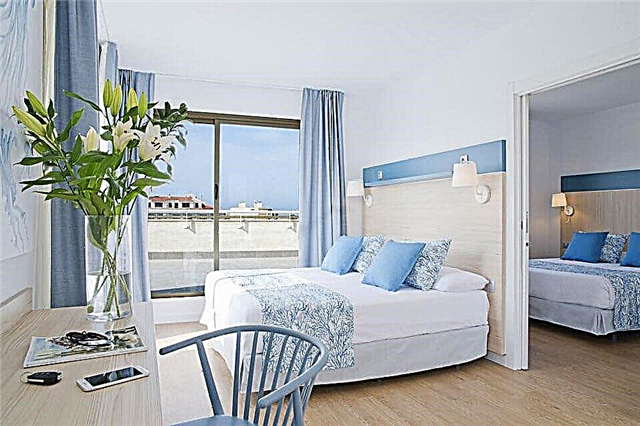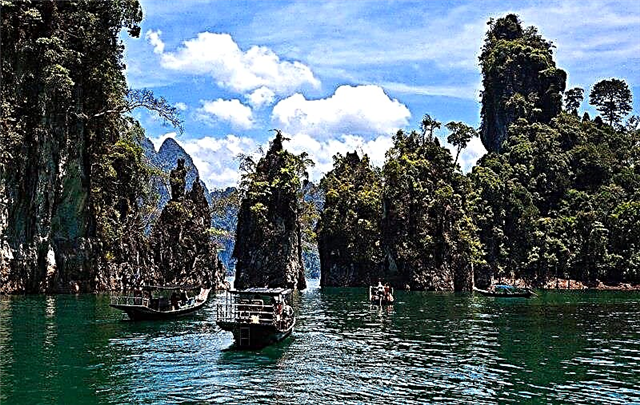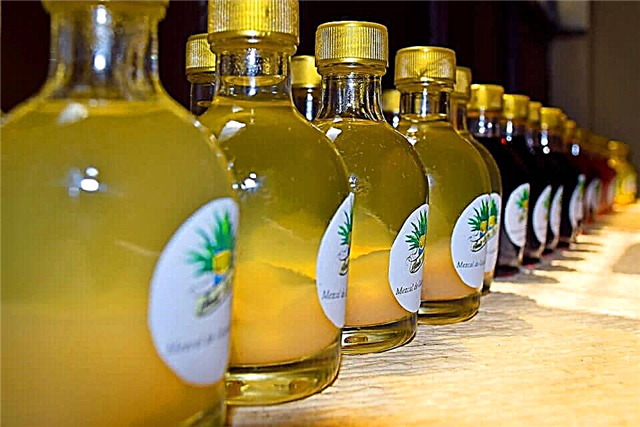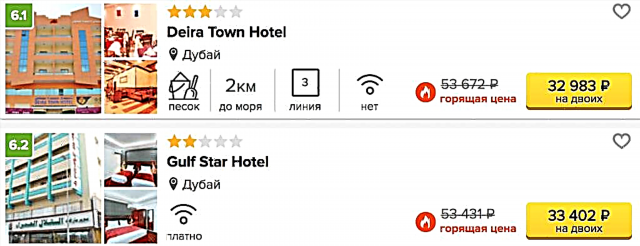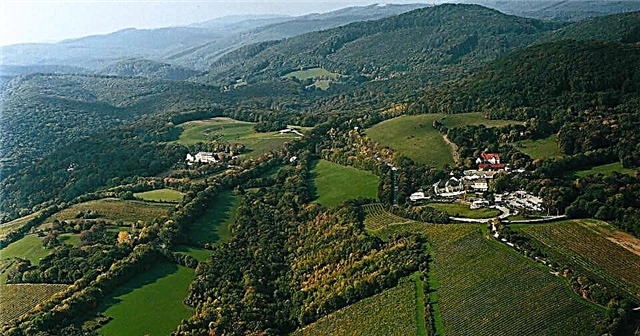Vienna is one of the greenest European cities in the world. Among the attractions, pleasant impressions are produced by numerous parks and squares, where tourists can comfortably spend time alone with nature. Well-groomed urban oases are man-made masterpieces of landscape design. Vienna's magnificent parks amaze visitors with an abundance of exquisite and fragrant plantings that delight passers-by with their sight. A variety of garden compositions are created thanks to a rich fund of age-old, exotic and flowering trees and shrubs.
Schönbrunn Zoo
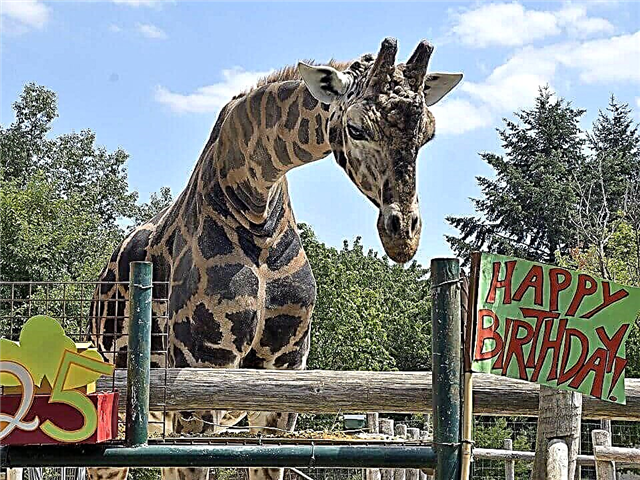
Tourists should visit the Schönbrunn Zoo. It is one of the oldest and richest zoological gardens in the world. More than two million visitors come here annually. The history of the founding of the zoo dates back to 1752. Initially, the menagerie served as the entertainment of Emperor Franza I and his court. The crowned ruler took a special interest in the animal kingdom and natural sciences. The zoo was opened to the public in 1779.
Today the Vienna Zoo is famous for its scientific achievements in the field of restoration of endangered populations of rare animals. Here for the first time, thanks to the efforts of scientists, the cubs of an African elephant and a panda bear were born, which until then was impossible to carry out in captivity. The well-groomed green area of the zoo covers an area of about 17 hectares. For the rarest representatives of the animal world, natural habitat conditions have been created that are as close as possible to the wild. This is facilitated by enclosures and pavilions with tropical thickets, reservoirs, stone boulders and logs.
The park also has an aquarium, oceanarium, terrarium and polarium (the habitat of animals in the Arctic and Antarctica). The remarkable Vienna Zoo contains over 8,000 herbivores, carnivores, birds, reptiles and marine life. The attention of tourists is attracted by polar bears, penguins and seals, which frolic and swim in an artificial pond.
In a separate area, rhinos are walking and taking mud baths. Do not deny yourself the pleasure of soaking up the sun on the branches of panda and koala trees. Guests of the zoo will be curious to observe the behavior of buffaloes, giraffes, penguins, anteaters, elephants, tigers, lions, cheetahs and other animals.
Schonbrunn Palace
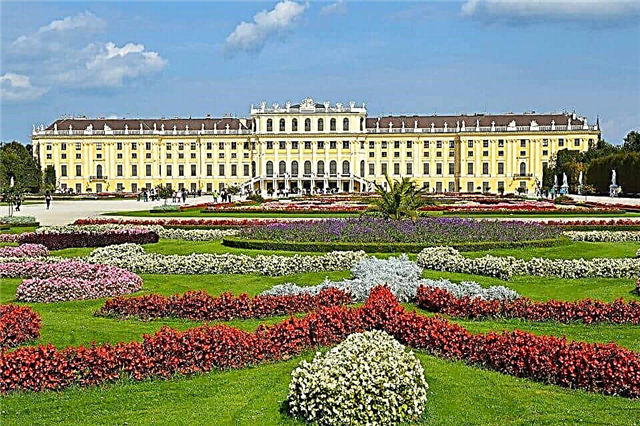
The Schönbrunn palace and park ensemble is one of the pearls of world architecture. This is the most popular attraction in Vienna, where numerous crowds of inquisitive tourists rush. The former summer residence of the imperial Habsburg dynasty and the adjacent park complex are included in the UNESCO World Heritage List. The majestic royal palace, erected in the Austrian Baroque style in 1743, amazes the audience with its elegant, dazzling and at the same time austere appearance. The rectangular building is crowned with balustrades, marble vases and attractive sculptures of angels.
The elongated and symmetrical façade of the ensemble is dotted with numerous windows, pilasters and trimmed with stone cornices. Tourists have the opportunity to appreciate the luxurious interior decoration of the ceremonial halls and galleries of the palace. The apartments amaze with their solemn atmosphere, carefully keeping the traces of the rich history of the former Austrian empire. The grandiose halls are decorated with colorful frescoes, hung with the richest crystal chandeliers and furnished with mirrors. Ceiling paintings, wall panels with gilded ornaments and carpeted floors are striking in their appearance.
Schönbrunn Palace is surrounded by an amazingly beautiful park, which captivates tourists with picturesque corners and interesting buildings. Numerous marble sculptures and fountains rise along the long alleys, neat paths and perfectly trimmed plantings. Rose gardens, flower beds and hanging gardens will delight the eye. A walk through the labyrinths of hedges, where tourists can get lost, will leave pleasant impressions.
On the territory of the park there is a greenhouse with exotic plants, fruit bushes and spreading palms. Roman ruins deserve special attention. The unique man-made structure of ancient times consists of a pool framed by a semicircular arch and statues of Roman gods. The hilly part of the park complex is crowned with an exquisite structure - Gloriette. It is a glazed triumphal arch, from which two wings with colonnades and semicircular arches extend.
Palace park Burggarten
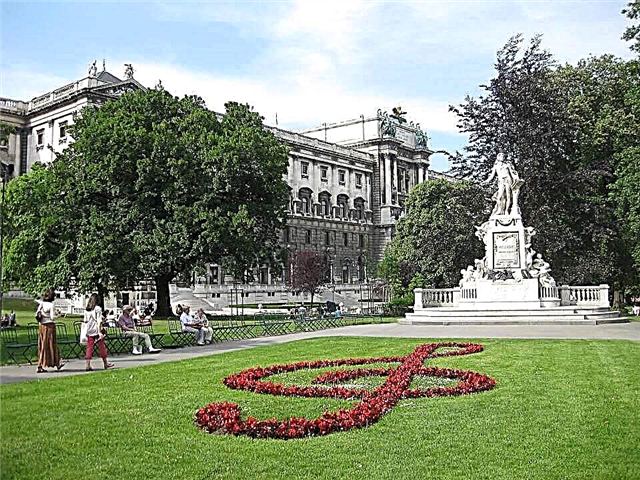
The Burggarten park is located in the shadow of the imposing Hofburg palace complex. A small and cozy park was laid out at the behest of Emperor Franz Joseph on the site of the former fortress bastion, blown up by Napoleon's troops at the beginning of the 19th century. Covered with grassy lawns, winding paths, flower beds and trees and shrubs, the park was originally intended to be a pleasant pastime for members of the royal family and its immediate environment. The always closed ensemble Burggarten became available to the public only in 1919.
One of the iconic elements of the park is a marble statue of the great composer Mozart. A treble clef is laid out of flowers in front of the monument to the creator of outstanding musical works. Among the deciduous and coniferous trees, you can see the only monument in Vienna dedicated to Emperor Franz Joseph. A pond with a fountain in the form of a sculpture of Hercules, which opens the lion's mouth, gives a special charm to the garden.
Lindens, oaks, chestnuts, plane trees, maples, nuts, as well as spruces, cypresses, junipers and other plantings create a contrasting kaleidoscope of various color compositions in this Viennese corner. The architectural decoration of Burggarten is the Palm House, erected in the Art Nouveau style at the end of the 19th century. The structure of the building, 180 meters long, consists of an iron frame and glazed blocks. A greenhouse is located under the roof of the building, divided into three climatic zones. The pavilions contain an impressive collection of exotic plants and flowers.
Vienna University Botanical Garden
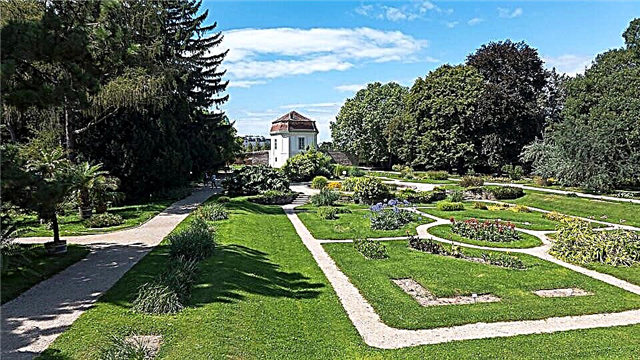
On the territory of the Vienna University, more than 11 thousand species of representatives of the plant world are collected, brought from all over the world. The 8-hectare botanical garden was established by Empress Maria Theresa in 1754. Initially, medicinal plants were grown here for the Faculty of Medicine and Biology of Vesk University, so that students could visually gain knowledge about the beneficial properties of medicinal outlandish plants.
Currently, an amazing collection of various specimens is growing in the open air. Walking along the well-maintained paths, tourists can see century-old trees with lush crowns, alpine meadows, bamboo groves, conifers, as well as cacti, agaves, aloes and other colorful representatives of the flora. Aesthetic pleasure is caused by the contemplation of fragrant buds of various flowers.
Park Augarten
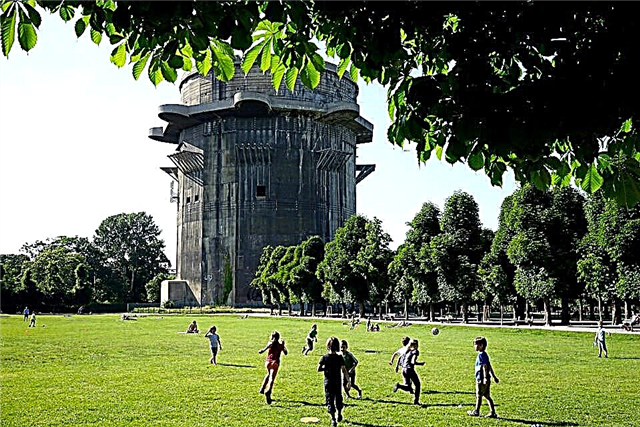
The Augarten is the oldest garden in the Austrian capital. At the end of the 18th century, this green corner of the city with wide chestnut alleys, trimmed lawns and neat gravel paths became the first public place for the entertainment of citizens of the capital of all classes.In the middle of the park stands the modest Baroque Augarten Palace, in the reception hall of which Mozart, Beethoven and Strauss regularly held their brilliant musical concerts.
Other halls were occupied by workshops for the production of porcelain products. Today, the palace houses a museum dedicated to the Viennese porcelain manufactory. Taking a measured walk along the shady alleys along the green lawns, tourists can see two colossal towers from the Second World War. Monolithic, massive and ominous fortifications were intended for the installation of anti-aircraft batteries. Ammunition and guns were stored inside the towers.
Hirschstätten botanical garden
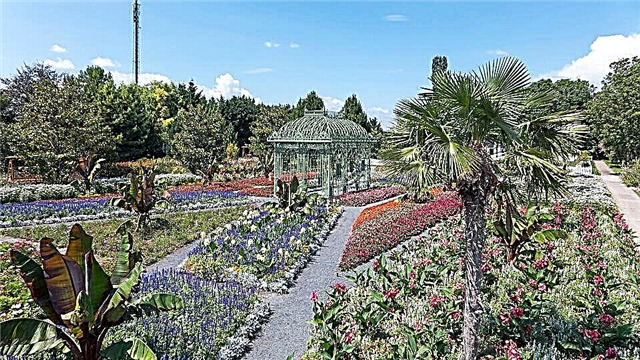
Botanical garden "Hirschstätten" attracts visitors with an abundance of diverse flowering fragrant plants, the contemplation of which can bring great aesthetic pleasure. The main goal of creating a gardening economy is to grow here flowers of all shades and varieties for the further landscaping of Vienna's parks. The impressive territory of the park covers an area of 60,000 m2... It is divided into thematic zones, where each scenic section of the park is distinguished by color, landscape and selection of plants.
Tourists will see an English, Indian, Asian, Mexican, as well as a coniferous, palm, fruit and even a primitive garden. Tourists flock here to admire the summer and spring flowers, the number and variety of which is amazing. There are about one million tulips grown in the park alone.
Gazebo
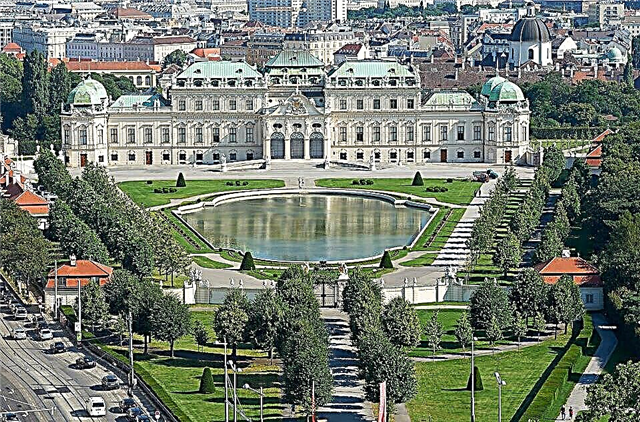
By the will of fate, tourists who find themselves in Vienna must definitely visit the Belvedere palace and park ensemble. This is a luxurious former residence of the great Austrian commander, fearless officer and native of Paris - Prince Eugene of Savoy. An architectural masterpiece in the Baroque style and a man-made wonder of landscape design, occupies a vast estate on the hillside. The complex, built in the 18th century, consists of two exquisitely decorated palaces. A regular park complex of amazing beauty is laid out between the mansions. Its length is about one kilometer.
According to the canons of French park art, the layout of the Belvedere has strict symmetrical geometric lines of alleys with plantings. The three-level composition of the terraced park is decorated with trees, shrubs, fountains, hedges and sculptures. Numerous statues depicting scenes of ancient Greek mythology are impressive with their diversity. Here, at every step, you can find interesting and unique figures of nymphs, muses, angels, newts, winged cherubs and sphinxes.
During flowering, the park is literally immersed in the greenery of plants and a riot of kaleidoscope of colorful flowers. Perfectly trimmed trees and lawns are pleasing to the eye, forming intricate shapes. Small pools with cascading waterfalls and curbs lend a special charm to the landscape. After walking through the park area, tourists can go to admire the valuable collections of Austrian painting masters. Works of art are exhibited in the halls of the Belvedere.
25hours Hotel beim MuseumsQuartier
Vein
In a vibrant 7th district, surrounded by numerous museums

Motel One Wien-Hauptbahnhof
Vein
It offers a bar, free Wi-Fi

Motel One Wien Westbahnhof
Vein
10 minutes by metro from the city center

Kurpark Oberlaa
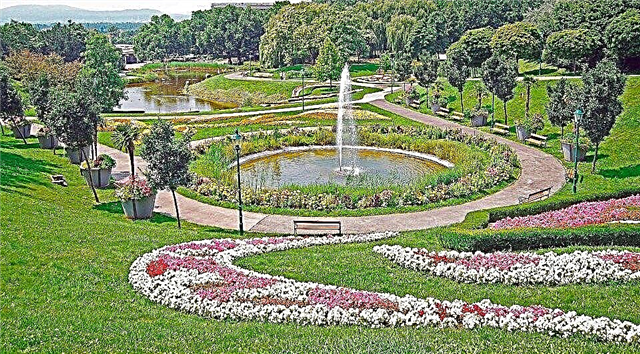
If you move a little further from the central districts of Vienna, then tourists can discover a picturesque park - Kurpark Oberlaa. This dendrological corner was designed in 1974 in preparation for the Vienna International Garden Exhibition. The green oasis is spread over a huge area of 800,000 square meters. Cozy meadows with sun loungers, ponds with fountains, tubs with palm trees, groves of exotic trees with lush crowns - all this makes up a single unique romantic atmosphere.
Among the hills, around which winding paths run, flower labyrinths and various plantings are planted. Noble flowers grow freely and violently. Visitors to the park will find themselves in an enchanted forest, where the trunks of tall trees are entwined with green ivy. The Kurpark Oberlaa offers a pleasant time in the bosom of a charming natural garden.
Vienna Woods
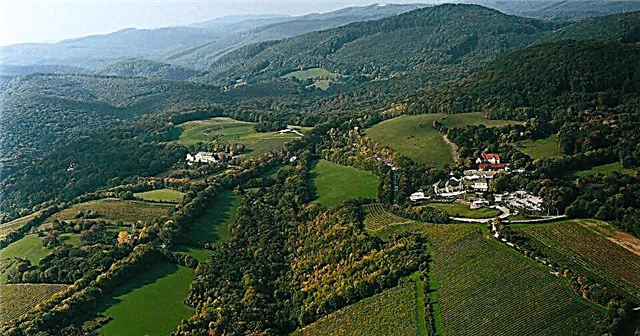
The capital of Austria is deservedly a treasure trove of natural attractions. The outskirts of Vienna are surrounded by dense forests, river valleys and majestic hills in a semicircle. The locals call these picturesque places the “green lungs of the city”. The wonderful land enchants tourists with the beauty of its landscapes, the purity of the air, the number of trees and herbs.
The famous Vienna Woods covers a vast area of over 1000 square kilometers. It partially covers 7 of Vienna's 23 districts and extends further to the southern outskirts of the capital. Popular mineral resorts, distinctive settlements, as well as reserves, vineyards, architectural monuments of the medieval era and other interesting objects are located here. From the hills of Leopoldsberg and Kahlenberg, an amazing panorama of the Austrian capital opens up.
In addition to observation platforms and walks along the countless routes along the biosphere park complex, visits to historical fortresses, estates and monasteries are of interest for tourists. Among them, Liechtenstein Castle deserves special attention, erected on the top of a mountain, surrounded by century-old trees. The elongated three-story structure consists of many elements: massive walls directed upwards, pointed windows, towers and bay windows.
City Park Stadtpark
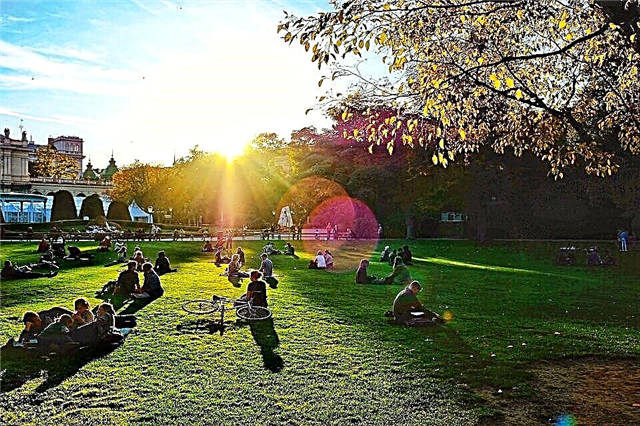
In the midst of the bustle of the city, next to the historic center of Vienna, lies the landscaped Stadtpark, founded in 1860. The cultural place attracts visitors with beautifully decorated lawns, vine-covered gazebos, flower beds, a pond with ducks, as well as glades with exotic plantings. Here tourists can calmly walk along the shady alleys without the bustle of the city, relax on benches under the crowns of trees, have a picnic on the soft grassy lawn and enjoy the amazing atmosphere of silence.
There are many monuments and busts dedicated to famous Austrian cultural figures - composers, artists and writers. The most popular is the gilded sculpture of the Viennese musician Johann Strauss. The statue greets its guests with a violin in hand. The Kursalon Palace harmoniously fits into the structure of the Stadtpark, where classical music concerts are regularly held. This magnificent two-storey building was built in the style of the Italian Renaissance. Its facade is decorated with a portico with four columns, a terrace, a balustrade and a series of arched windows.
Amusement park Prater
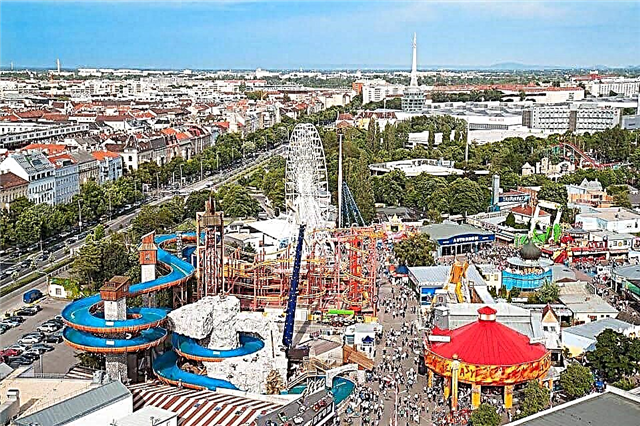
Tourists will experience a lot of stormy emotions from visiting the Prater park complex. This is one of the oldest amusement parks in the world, where every visitor will find something to their liking. Numerous attractions, green woodlands, shady alleys and enchanting lawns leave an indelible impression. An extensive zone of cultural and perky recreation occupies an area of 6 km2... The infrastructure of the area is conducive to a peaceful and at the same time active pastime.
The territory is indented with walking paths, bike paths and soft grassy meadows. There are sports grounds, cafeterias and children's corners. In total, there are 250 different exciting modern and original historical attractions. Extreme slides and various roundabouts will excite with their maximum speed. Karting, catapults, racing tracks, labyrinths, trampolines, laugh rooms, slot machines, swings and shooting galleries evoke enthusiastic feelings.
The tower with a chain carousel rushes upward by 117 meters, the angular speed of rotation of which reaches 60 km / h. The Prater's symbol is the Ferris wheel, installed in 1896. The height of such a venerable age of the building reaches 65 meters. The wheel rotates fifteen red carriages, reminiscent of trams or retro trains. Inside the cabins, there are wooden benches that fully convey the atmosphere of the cabins of the 19th century trains.
Setagaya Park
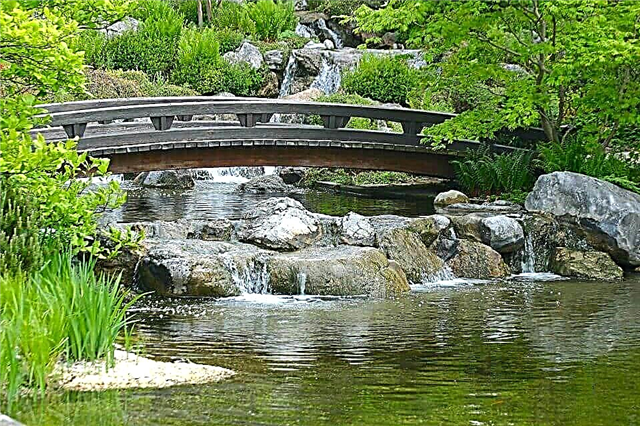
In 1992, the incredibly mesmerizing Setagaya Garden was laid out by Japanese landscape designer Ken Nakajima. The remarkable Vienna park has become a symbol of friendship between Austria and Japan. The wonderful garden is decorated in the best Japanese traditions. The integral elements of the park are a tea house, graceful rows of flowering plants, a pond with a waterfall, stone boulders and delicate bridges.
The picturesque well-groomed territory turns into a kaleidoscope of bright colors during the flowering period. Setagaya Park symbolizes the perfect beauty of earthly nature. Its central entrance is adorned with a stone monument carved with Japanese words, denoting a heavenly view of the local park landscapes.
Rope Park Kahlenberg
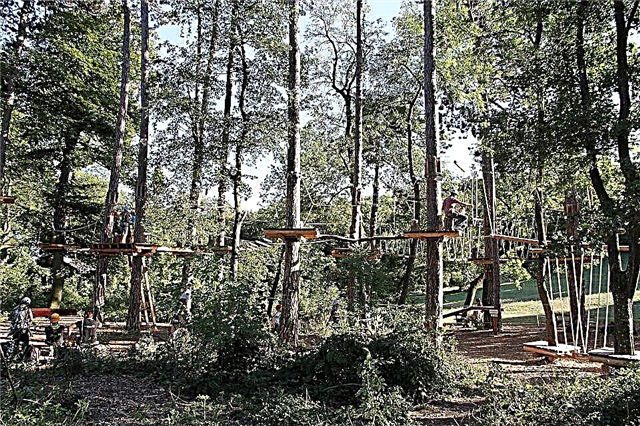
Surrounded by picturesque landscapes between the majestic Kahlenberg and Leopoldsberg hills, there is a forest rope park that attracts fans of extreme sports recreation. Vacationers have at their disposal fourteen trails of varying degrees of difficulty. The routes run at an altitude of one to twenty meters above ground level. The rope park will appeal to both adults and children.
Numerous obstacles will give you a lot of pleasure, to overcome which you will need a lot of skill, dexterity and physical endurance. The participants in the passage of the rope complex are under close scrutiny from experienced instructors. The safety of walking along the stretched bridges between the tops of tall trees is provided by a belay system.
Donaupark
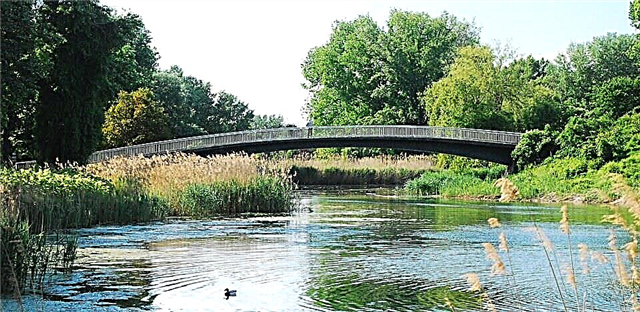
Between the Danube channels, there is a cozy well-kept park, which is the second largest green area in Vienna. The park complex was founded in 1962 on the site of a former landfill. The implementation of the beautification of an impressive 800 thousand square meters area contributed to the improvement of the environment and the creation of a pleasant recreation area for people. Donaupark has everything you need to attract vacationers who want to spend time comfortably and variedly alone with nature.
This is favored by a well-groomed park and forest area. Glades with roses, irises and trees and shrubs, as well as green meadows, where you can have a picnic, cause aesthetic pleasure. Coniferous, heather and cereal plants give the landscape a special decorative look at any time of the year. Flower beds harmoniously blend with popular tree species such as plane trees, maples, chestnuts and lindens. The decoration of the park picturesque composition is a pond with swans and ducks.
Numerous playgrounds, sports and children's playgrounds will delight visitors to the park. Wide paved paths are provided for running, rollerblading and cycling. Popular are shady courts, chess tables and green fields for minigolf and football. The central and expressive dominant of the garden is the Danube Tower, soaring 252 meters high. This is the tallest structure in Vienna. Outwardly resembling a TV tower, the tower has an exclusively entertainment purpose. It houses an observation deck, as well as two revolving restaurants.
Town Hall Park
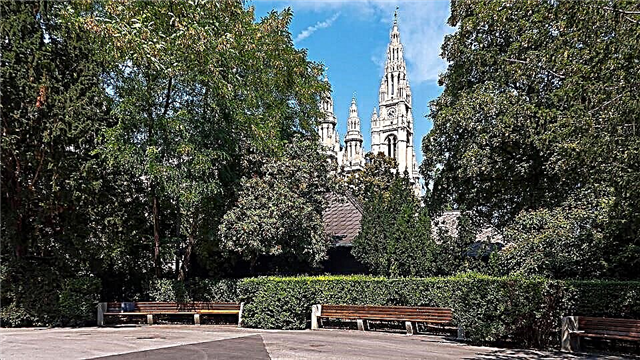
Adjacent to the majestic neo-Gothic openwork building of the Vienna City Hall is a wonderful park divided by a square, where all kinds of entertainment and cultural events take place in the open air all year round. It hosts Christmas markets, music festivals and various celebrations. Green square occupies an area of about 40,000 m2.
The Town Hall Park, decorated in the style of an English garden, amazes visitors with the splendor of age-old trees, flowering shrubs and various plantings in tubs. Old and powerful beeches, plane trees, metasequoias and ginkgoes attract attention. On both sides of the paths of the garden, there are original benches arranged in one long row. Popular objects of the park are two identical fountains. In the round bowls of the pools, there are rocky islets, from which high jets of water rise upward.
Sigmund Freud park
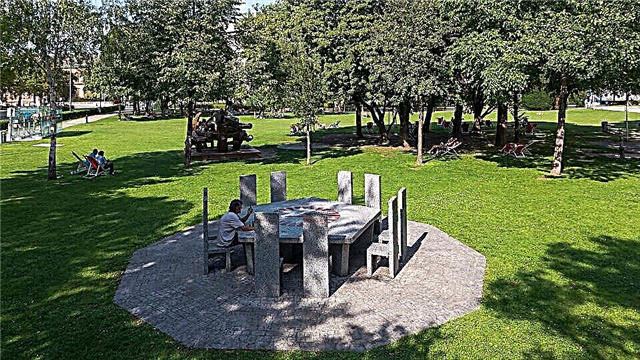
Between the University of Vienna and the Gothic temple of Votivkirche, there is a small green area called the Sigmund Freud park. The place is famous for the fact that sun loungers are brought here every morning of the summer months, on which tourists and crowns can lie down and soak up the sun completely free of charge.
Numerous lawns, secluded paths, spreading trees create a romantic atmosphere. In the center there is an original sculptural composition representing a massive granite pentahedral table with ten square chairs. The monument symbolizes the expansion of the membership of the member states of the European Union.
Lainzer Tiergarten nature reserve
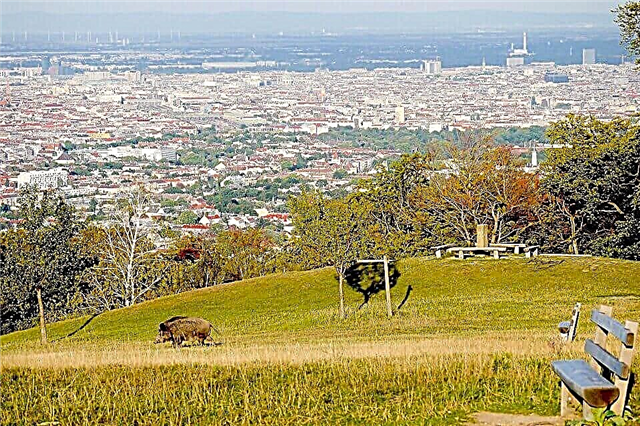
On the outskirts of the famous Vienna Woods within the boundaries of the Austrian capital lies the Lainzer nature reserve. These are the former imperial hunting grounds, which since 1919 have become publicly accessible to all citizens and guests of the country. The attractive parkland with picturesque surrounding natural landscapes captivates the eyes of tourists of all ages.
The forest landscape is cut by a network of walking paths, which will appeal to lovers of walking in the fresh air. The Lainzer Nature Reserve is home to many representatives of the animal world, including mammals, birds, reptiles and insects. Here you can meet wild boars, hares, deer, rams, Alpine newts and other animals. A separate section of the park is set aside for a children's playground. Swings and slides are made of natural wood materials.
The architectural landmark of the reserve is the wonderful Villa Hermes. The secluded palace, hidden among the lush crowns of century-old trees, was erected in 1886 for the wife of Emperor Franz Joseph. The façade of the imposing three-story building is replete with a variety of decorative elements.

